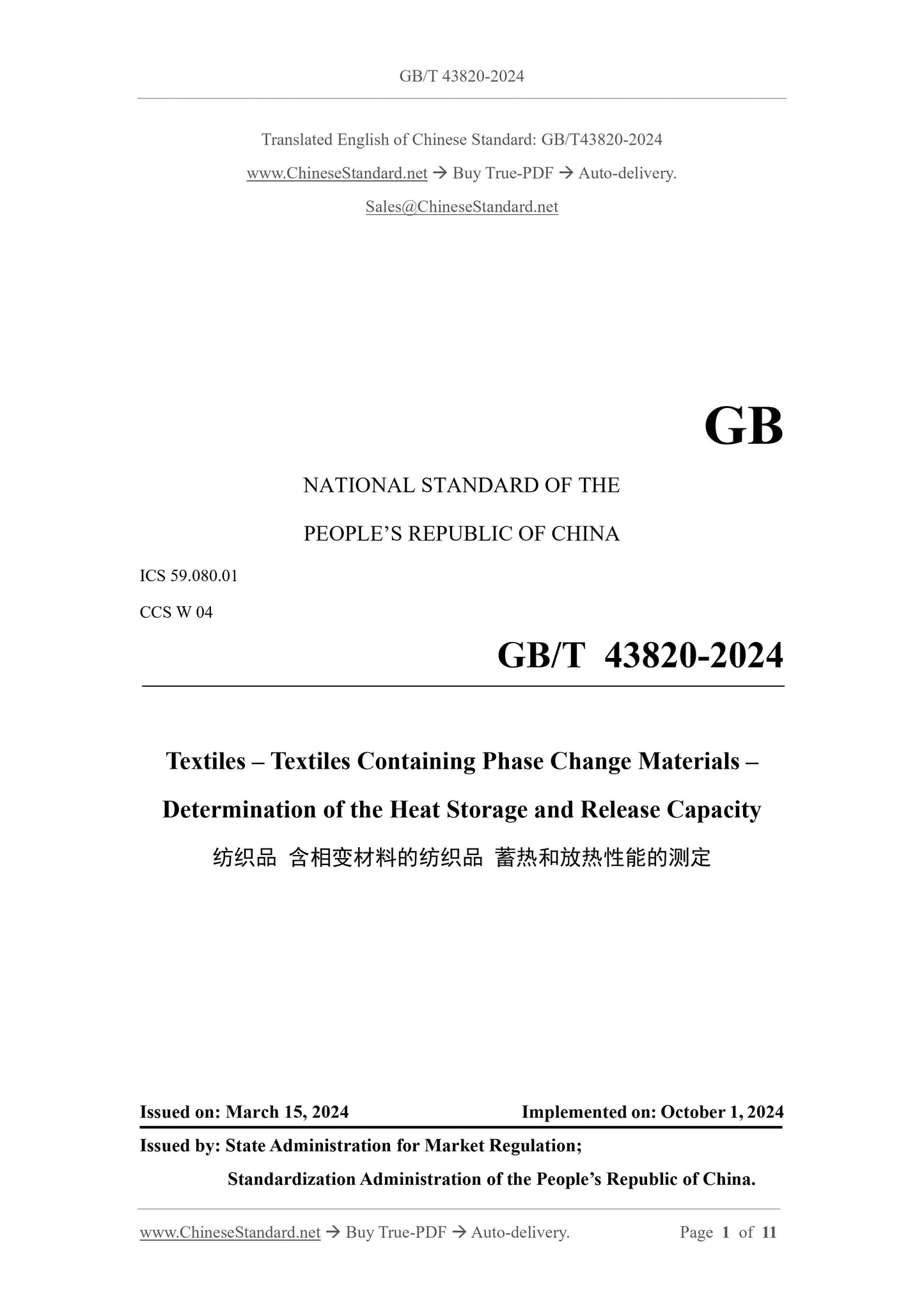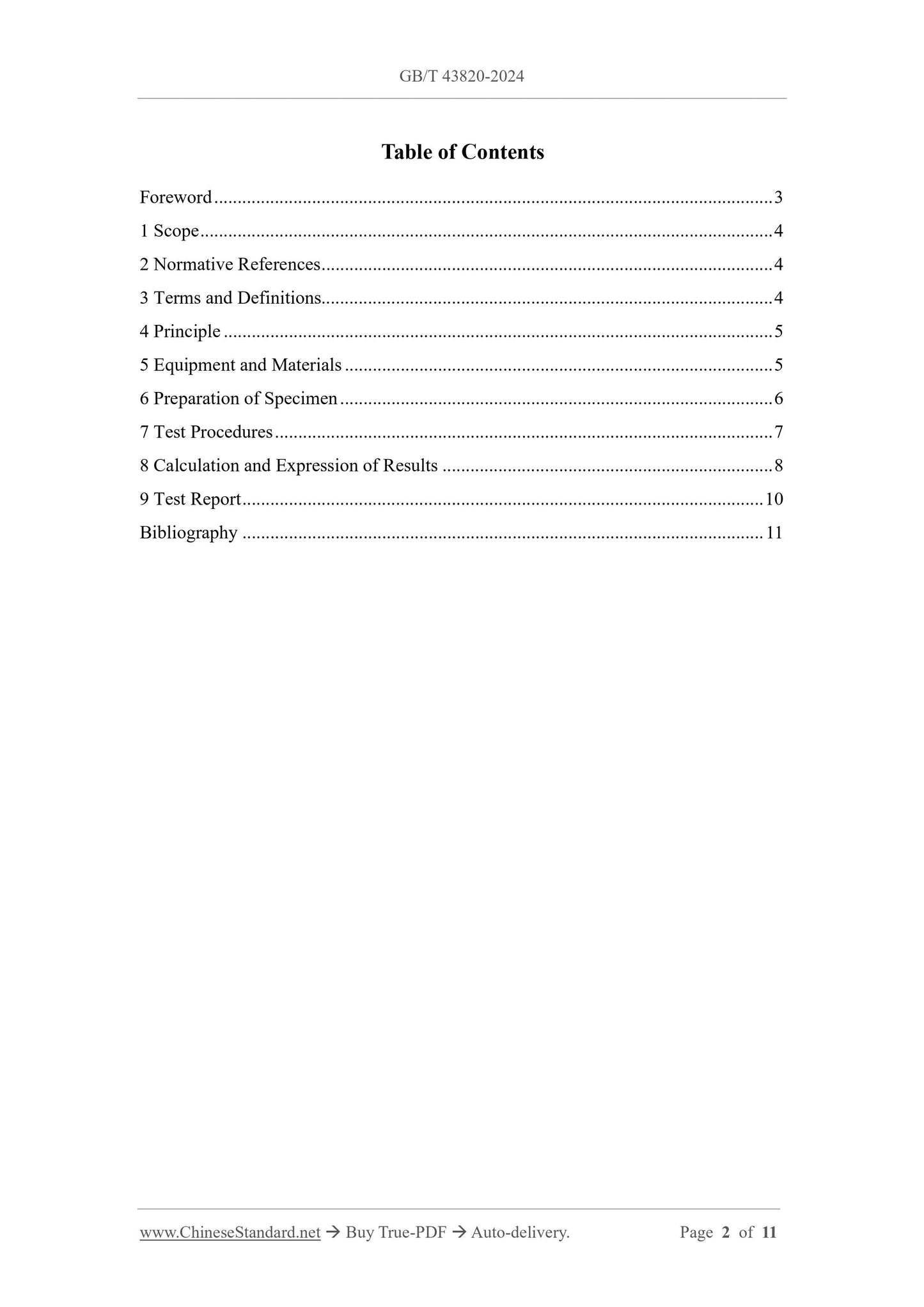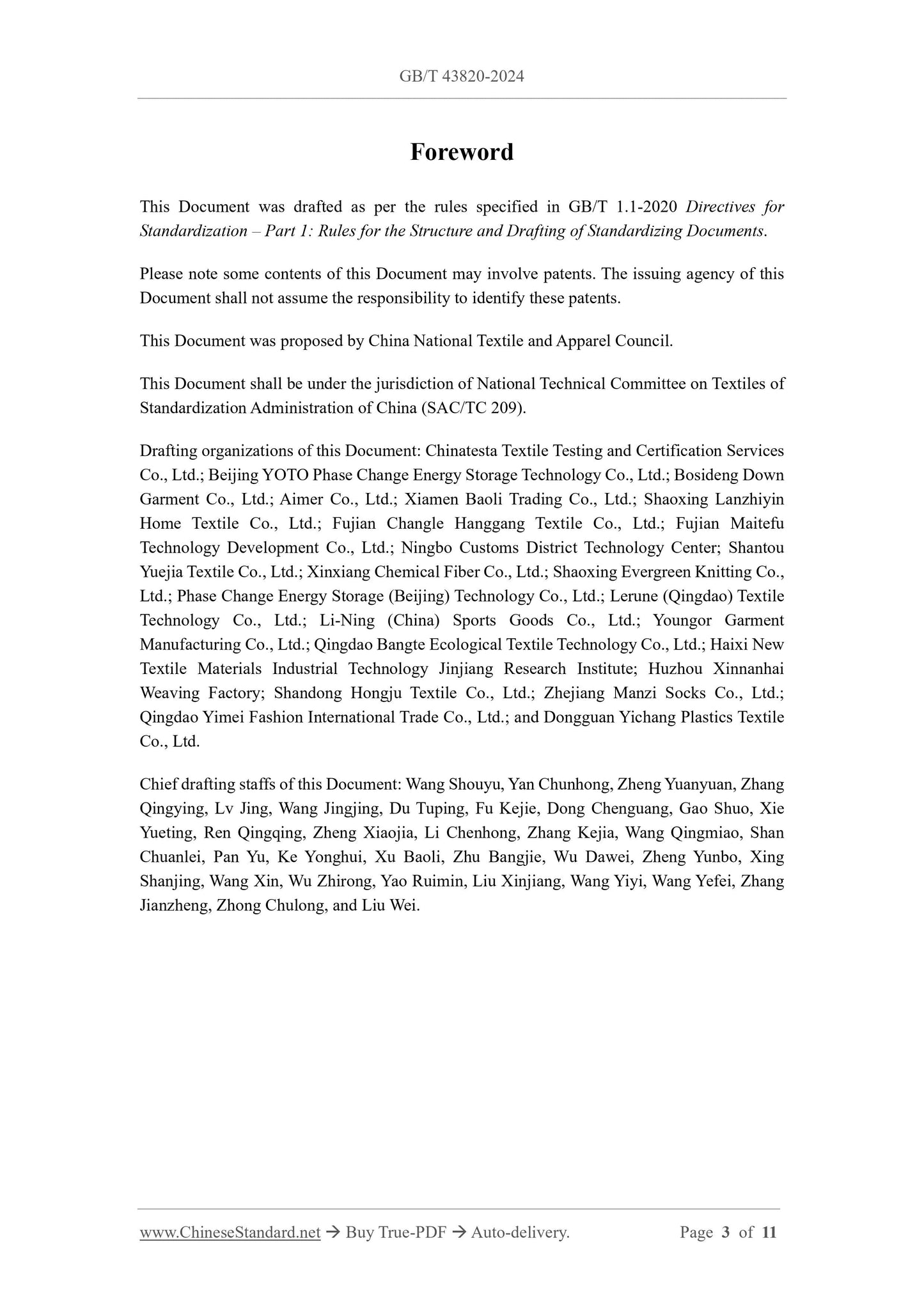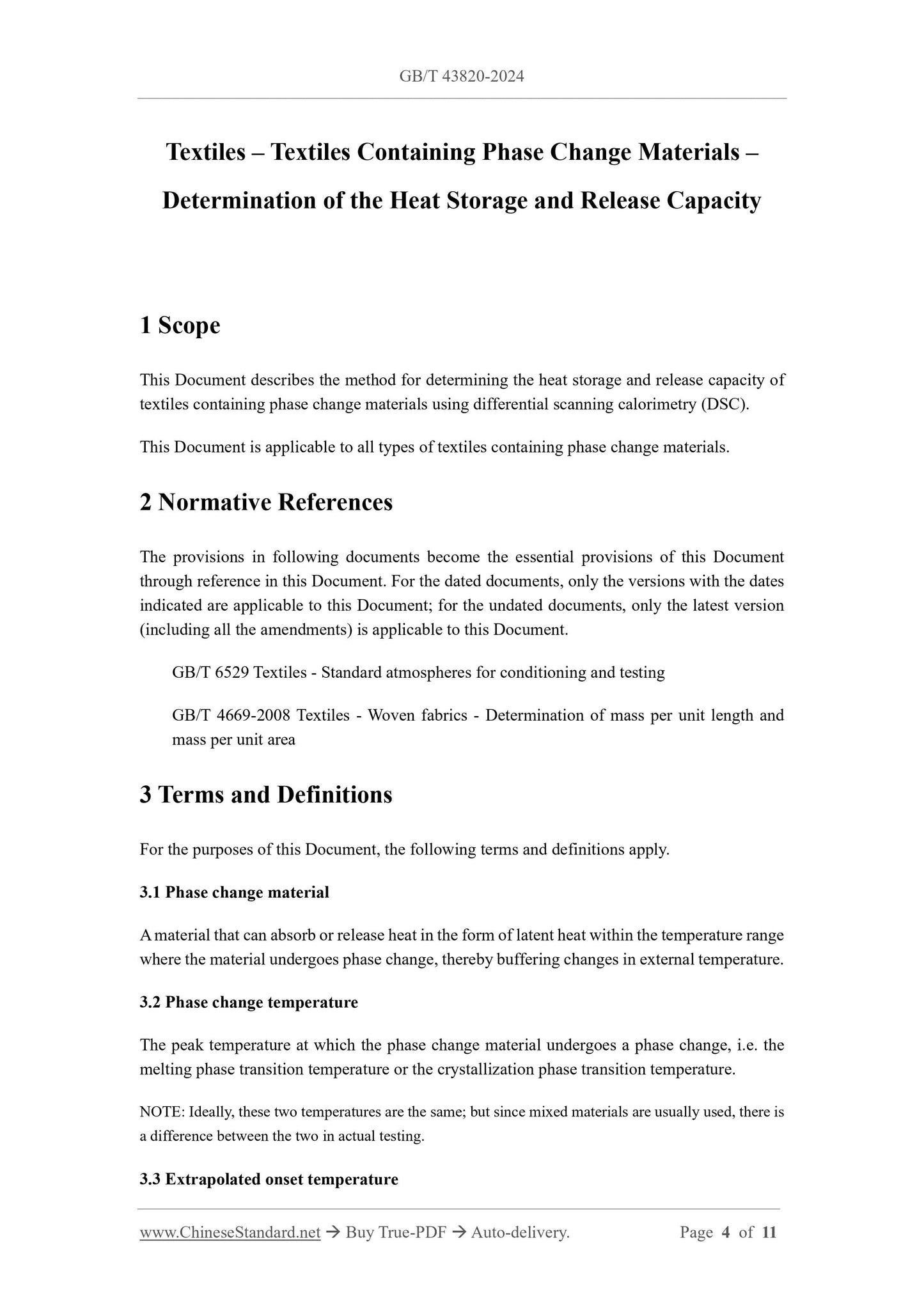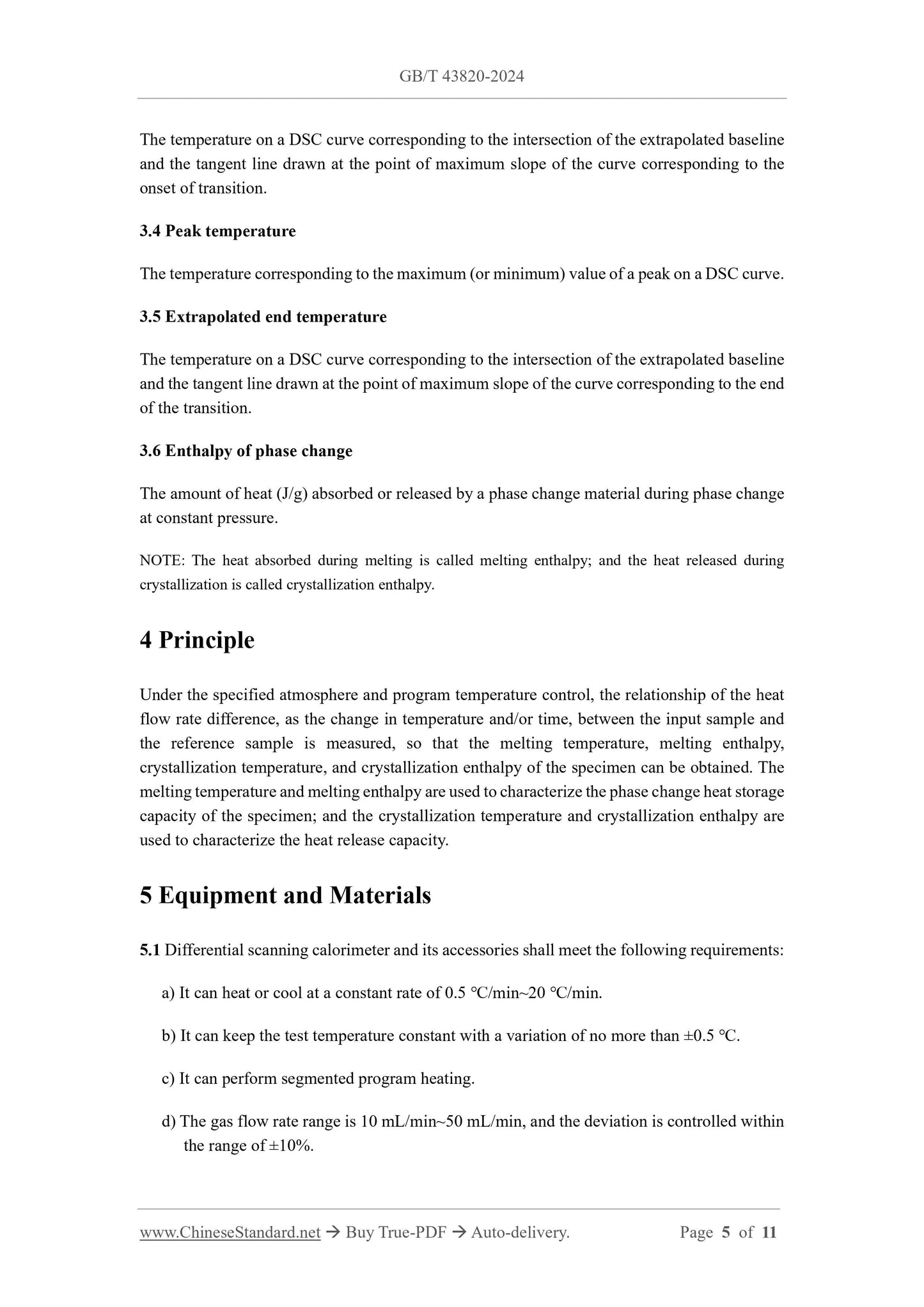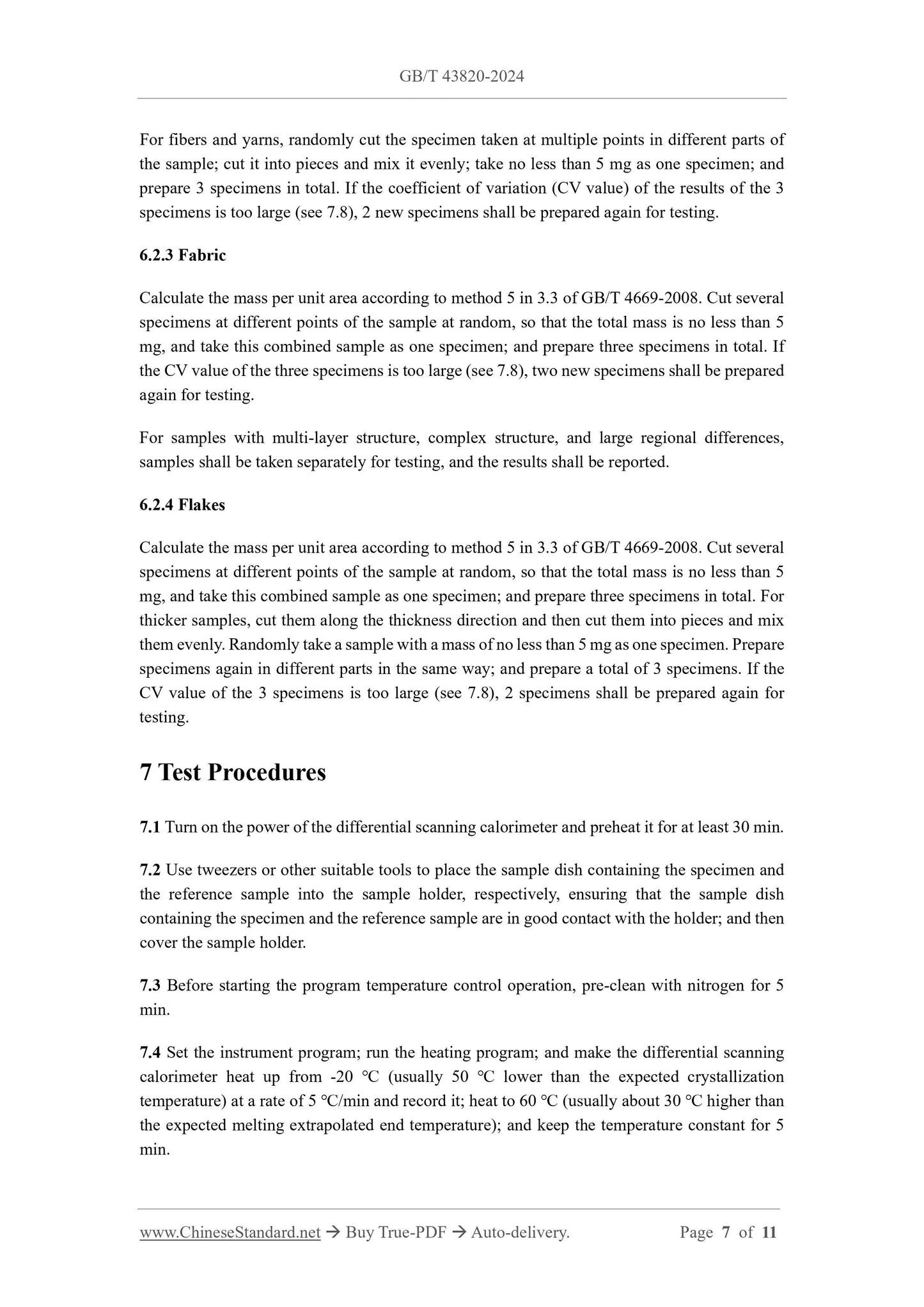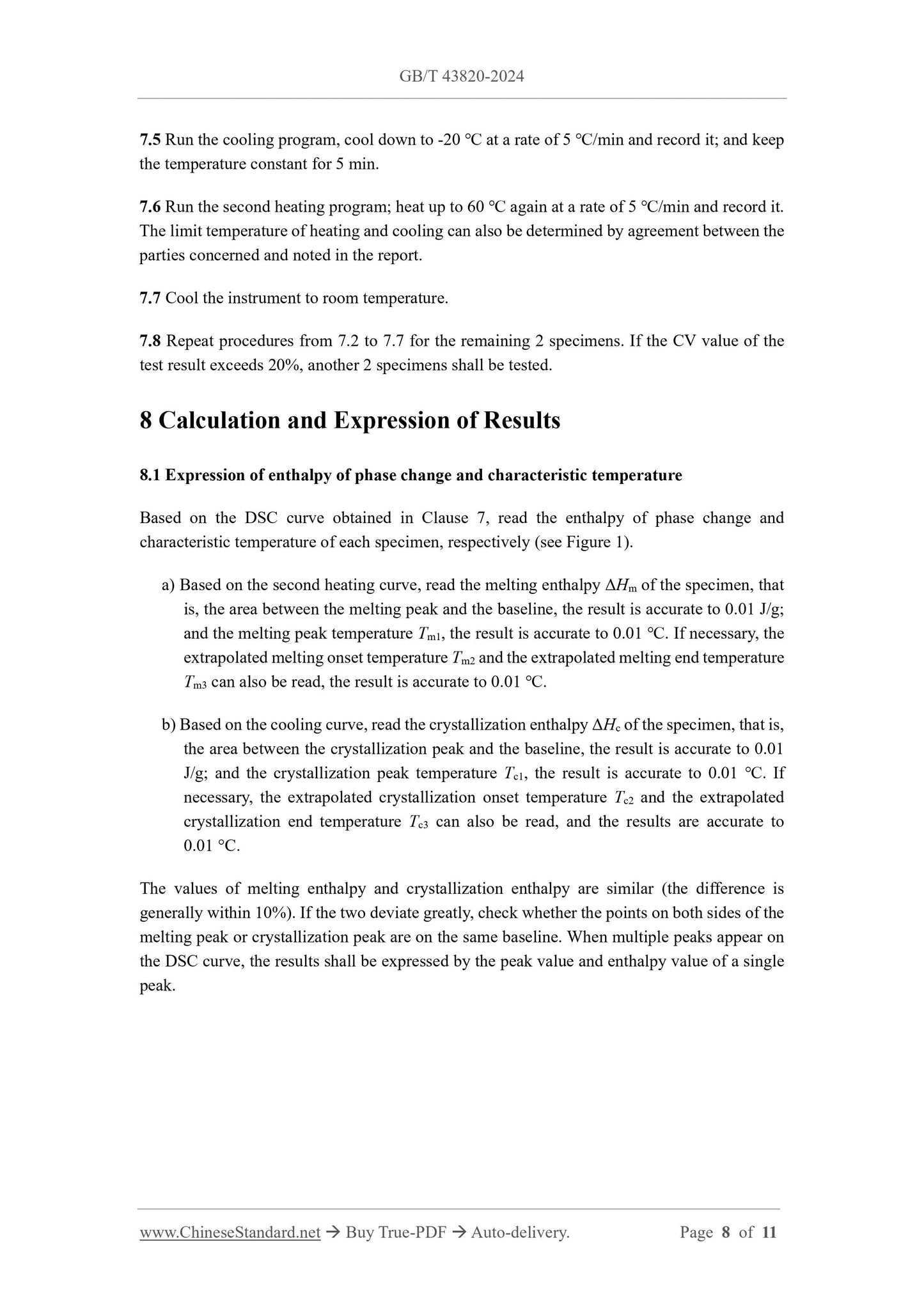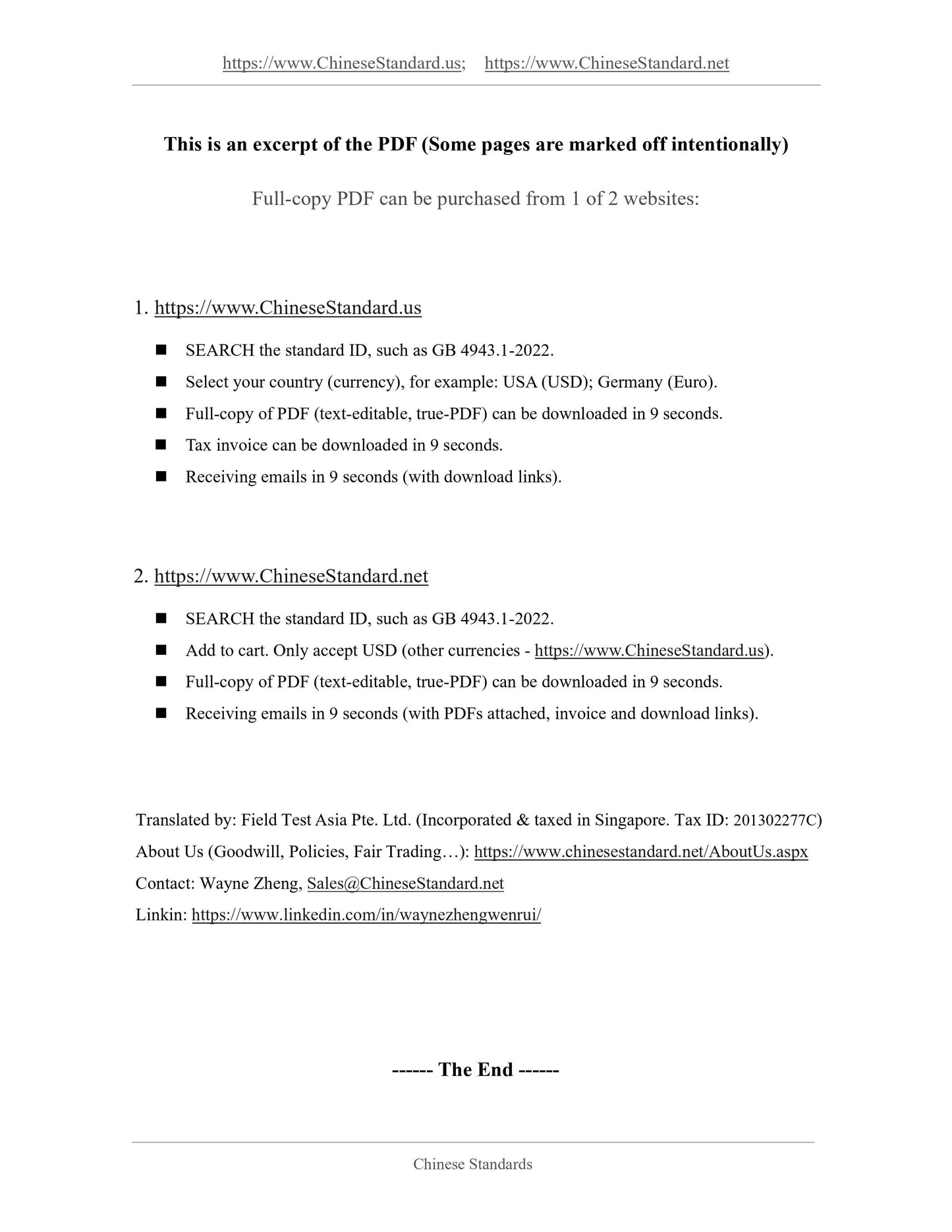1
/
of
8
www.ChineseStandard.us -- Field Test Asia Pte. Ltd.
GB/T 43820-2024 English PDF (GB/T43820-2024)
GB/T 43820-2024 English PDF (GB/T43820-2024)
Regular price
$155.00
Regular price
Sale price
$155.00
Unit price
/
per
Shipping calculated at checkout.
Couldn't load pickup availability
GB/T 43820-2024: Textiles - Textiles containing phase change materials - Determination of the heat storage and release capacity
Delivery: 9 seconds. Download (and Email) true-PDF + Invoice.Get Quotation: Click GB/T 43820-2024 (Self-service in 1-minute)
Newer / historical versions: GB/T 43820-2024
Preview True-PDF
Scope
This Document describes the method for determining the heat storage and release capacity oftextiles containing phase change materials using differential scanning calorimetry (DSC).
This Document is applicable to all types of textiles containing phase change materials.
Basic Data
| Standard ID | GB/T 43820-2024 (GB/T43820-2024) |
| Description (Translated English) | Textiles - Textiles containing phase change materials - Determination of the heat storage and release capacity |
| Sector / Industry | National Standard (Recommended) |
| Classification of Chinese Standard | W04 |
| Classification of International Standard | 59.080.01 |
| Word Count Estimation | 10,185 |
| Date of Issue | 2024-03-15 |
| Date of Implementation | 2024-10-01 |
| Issuing agency(ies) | State Administration for Market Regulation, China National Standardization Administration |
Share
